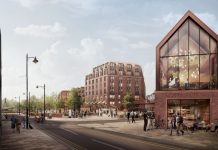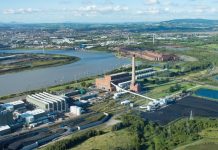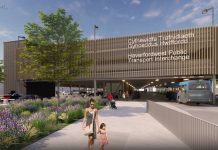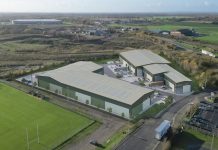Andrew Aherne, Head of Industrial and Logistics Agency at national commercial property consultancy, Lambert Smith Hampton’s (LSH) Manchester office, outlines the current state of speculative development in the North West.
After five years of strong take-up of existing buildings in the North West’s logistics sector, the development of new distribution space is picking up. The limitation of stock is encouraging the build-to-suit market and we are seeing significant new developments across the region.
A major activity hotspot at the moment is Omega in Warrington, with over 1m sq ft of distribution space currently under construction on site at Omega North and proposals in for planning on Omega South. Since the start of enabling works at the beginning of this year, Omega has already received a lot of activity from occupiers and investors – LSH recently advised Hermes Parcelnet on securing the development of its 153,500 sq ft distribution depot, and advised LIM on the forward funding of this and the 220,000 sq ft Brakes Scheme.
Another key hotspot is further up the M6 at Leyland/Chorley where over 800,000 sq ft has been developed. Waitrose is to take occupation of their new 350,000 sq ft building this summer as early as next month [July], in addition to Royal Mail, who has developed a new 135,000 sq ft base for its specialised parcel distribution facility. Furthermore, at Lancashire Business Park in Leyland, two new buildings are currently under construction totalling 322,000 sq ft, which will also be completed in July. This is on the market via LSH and comprise the largest spec units in the country. JLL are joint agents.
In terms of existing built stock, at the height of the market in 2007 there were 21 high quality distribution buildings over 100,000 sq ft on the market but there is now only one of these remaining. While some modern buildings have come back onto the market, there have been surprisingly few, considering the tough economic conditions that have prevailed.
On the demand side, there are still significant unsatisfied requirements. There are currently approximately 3m sq ft of active requirements in North West market, over 100,000 sq ft of which equates to a total land requirement of over 150 acres.
When these three factors of limited supply/build-to-suit development and unsatisfied demand are considered, this starts to build a good business case for speculative development of larger buildings. There are, however, two significant ingredients sadly lacking, which are business confidence and funding. While business confidence has improved from a year ago, there is still a general lack of confidence in the market place itself. Nevertheless, it is funding which is the principal hurdle to development in that there is no third party funding for speculative development on a significant scale.
Having said that, there have been some small scale speculative developments over the last 12-–-18 months, the vast majority of which have been funded by high net worth individuals/organisations or gap funded via the European Regional Development Fund (ERDF).
Where these have been built and completed, such as the Estuary in Speke, Crown Business Park in Rochdale and Birch Business Park in Rochdale, and where schemes of providing units of up to 20,000 sq ft have been provided, there has been great success. All of these aforementioned schemes were all let or sold on or within three months of practical completion.
Developments currently on site or about to start include Burnley Bridge, Burnley, where a small unit scheme is being provided, again funded by ERDF money, and also a small speculative scheme comprising about 25,000 sq ft to S Park, Stockport which is actually being privately funded off the back of a pre-let on the same site. Similarly, a 16,000 sq ft is also on site at Birch following the successful letting of a new 20,000 sq ft unit built speculatively.
We believe therefore that, as funding constraints are loosened, we will see speculative development and a strong sign of this is the activity of developers who are already in the market securing land and preparing sites for development.






















